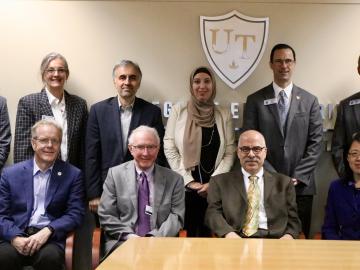
Filter News
Area of Research
- (-) Fusion Energy (13)
- (-) Materials (66)
- Advanced Manufacturing (24)
- Biological Systems (1)
- Biology and Environment (58)
- Building Technologies (3)
- Computational Biology (2)
- Computational Engineering (1)
- Computer Science (2)
- Electricity and Smart Grid (1)
- Energy Science (143)
- Energy Sciences (1)
- Fuel Cycle Science and Technology (1)
- Functional Materials for Energy (1)
- Fusion and Fission (30)
- Isotope Development and Production (1)
- Isotopes (9)
- Materials for Computing (11)
- National Security (13)
- Neutron Science (30)
- Nuclear Science and Technology (42)
- Nuclear Systems Modeling, Simulation and Validation (2)
- Quantum information Science (1)
- Supercomputing (67)
News Topics
- (-) 3-D Printing/Advanced Manufacturing (23)
- (-) Advanced Reactors (10)
- (-) Biomedical (7)
- (-) Coronavirus (4)
- (-) Frontier (4)
- (-) Nuclear Energy (23)
- (-) Polymers (17)
- Artificial Intelligence (9)
- Big Data (2)
- Bioenergy (11)
- Biology (4)
- Buildings (5)
- Chemical Sciences (32)
- Clean Water (3)
- Composites (9)
- Computer Science (19)
- Critical Materials (13)
- Cybersecurity (4)
- Energy Storage (34)
- Environment (15)
- Exascale Computing (2)
- Fusion (18)
- Grid (5)
- High-Performance Computing (4)
- Irradiation (1)
- Isotopes (13)
- ITER (1)
- Machine Learning (5)
- Materials (73)
- Materials Science (78)
- Mathematics (1)
- Microscopy (27)
- Molten Salt (3)
- Nanotechnology (39)
- National Security (3)
- Neutron Science (33)
- Partnerships (11)
- Physics (28)
- Quantum Computing (3)
- Quantum Science (11)
- Security (2)
- Simulation (1)
- Space Exploration (2)
- Summit (3)
- Transportation (14)
Media Contacts

In the race to identify solutions to the COVID-19 pandemic, researchers at the Department of Energy’s Oak Ridge National Laboratory are joining the fight by applying expertise in computational science, advanced manufacturing, data science and neutron science.

OAK RIDGE, Tenn., Feb. 27, 2020 — Researchers at Oak Ridge National Laboratory and the University of Tennessee achieved a rare look at the inner workings of polymer self-assembly at an oil-water interface to advance materials for neuromorphic computing and bio-inspired technologies.

The prospect of simulating a fusion plasma is a step closer to reality thanks to a new computational tool developed by scientists in fusion physics, computer science and mathematics at ORNL.

Energy storage startup SPARKZ Inc. has exclusively licensed five battery technologies from the Department of Energy’s Oak Ridge National Laboratory designed to eliminate cobalt metal in lithium-ion batteries. The advancement is aimed at accelerating the production of electric vehicles and energy storage solutions for the power grid.

Rigoberto “Gobet” Advincula has been named Governor’s Chair of Advanced and Nanostructured Materials at Oak Ridge National Laboratory and the University of Tennessee.

Researchers at Oak Ridge National Laboratory demonstrated that an additively manufactured polymer layer, when applied to carbon fiber reinforced plastic, or CFRP, can serve as an effective protector against aircraft lightning strikes.

As scientists study approaches to best sustain a fusion reactor, a team led by Oak Ridge National Laboratory investigated injecting shattered argon pellets into a super-hot plasma, when needed, to protect the reactor’s interior wall from high-energy runaway electrons.

Researchers at the Department of Energy’s Oak Ridge National Laboratory have received five 2019 R&D 100 Awards, increasing the lab’s total to 221 since the award’s inception in 1963.

The U.S. Department of Energy announced funding for 12 projects with private industry to enable collaboration with DOE national laboratories on overcoming challenges in fusion energy development.

ORNL and The University of Toledo have entered into a memorandum of understanding for collaborative research.


